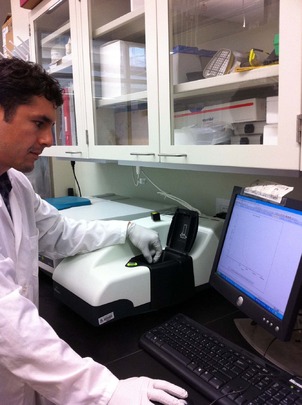
The University of Alberta in Canada is using the Zetasizer Nano to characterise nanoparticle behaviour in biological and aqueous matrices.
Size is known to affect nanoparticle toxicity and toxicology and the technique of dynamic light scattering (DLS) provides the average size behavior in solution.
As implemented in the Zetasizer Nano, it delivers information for physical characterization in terms of charge and solubility.
Professor Greg Goss is Director of the Office of Environmental Nano Safety (OENS) in the Department of Biological Sciences at the University of Alberta.
“Dynamic light scattering is now recognized as a basic characterisation technique in this area of work and the regulators are familiar with the measurement, its results and limitations. In the past we’ve used TEM but this works better in conjunction with DLS since we can now study size in solution in a way that is simple to use and with only minimal need for sample preparation,” he said.
“DLS is the only technique on campus that can provide size information in solution, without drying the samples.”
The Zetasizer Nano is used by this research group to study the interactions of particles such as silver, titanium, silica and polymer coated quantum dots.
Elsewhere in the department it also plays a role in the analysis of other systems, micelles and polymers for example.
Malvern’s Zetasizer range combines particle size, zeta potential and molecular weight analysis for particles and molecules from below a nanometer in size to several microns.
The system measures size using dynamic light scattering, zeta potential and electrophoretic mobility using electrophoretic light scattering, and molecular weight using static light scattering.




